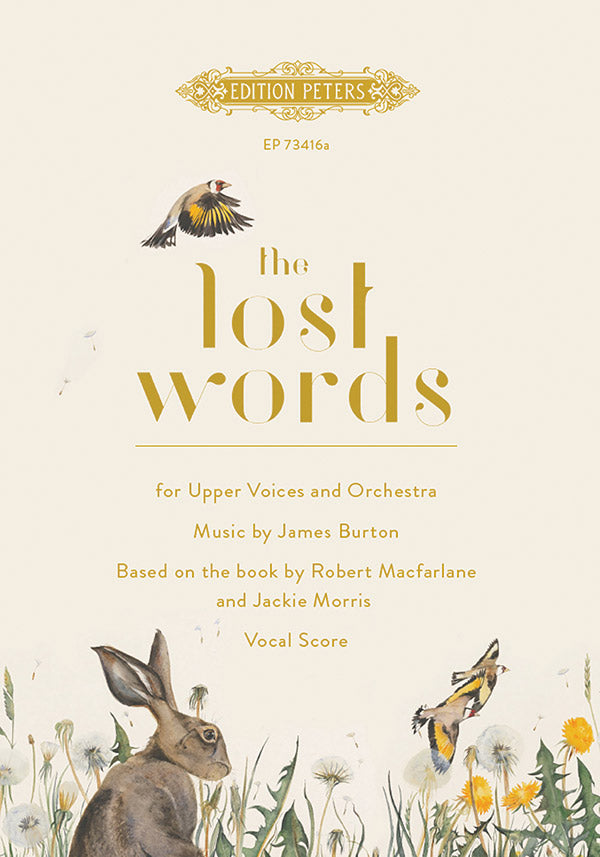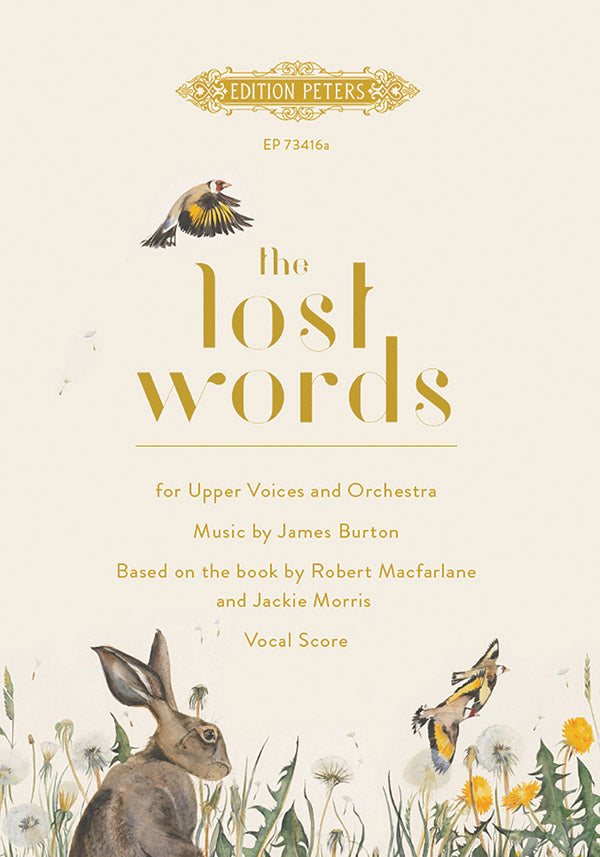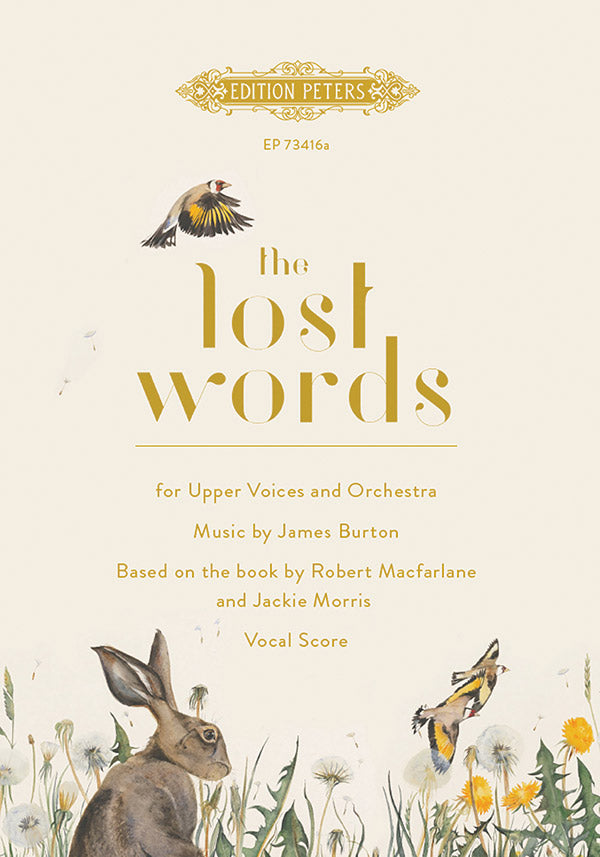James Burton
Burton: The Lost Words
In stock and typically ships within 1 business day.
- Composer: James Burton (1974-)
- Format: Vocal Score
- Instrumentation (this edition): Piano Reduction, SSAA Choir
- Originally for: Orchestra, SSAA Choir
- Work: The Lost Words
- Work Language: English
- ISMN:
- Size: 8.3 x 11.7 inches
- Pages: 64
Description
The Lost Words by composer James Burton takes its inspiration and text from the award-winning ‘cultural phenomenon' and book of the same name by Robert Macfarlane and Jackie Morris: a book that was, in turn, a creative response to the removal of everyday nature words like acorn, newt and otter from a new edition of a widely used children's dictionary. Both the book and Burton's 32-minute work, which is written in 12 short movements for upper-voice choir in up to 3 voice parts (with either orchestral or piano accompaniment), celebrates each lost word with a beautiful poem or ‘spell', magically brought to life in Burton's music. At its heart, the work delivers a powerful message about the need to close the gap between childhood and the natural world. Burton's piece was co-commissioned by the Hallé Concerts Society for the Hallé Children's Choir and the Boston Symphony Orchestra. The piano accompaniment version was premiered at the Tanglewood Festival in 2019 by the Boston Symphony Children's Choir, of which Burton is founder and director. The Hallé Children's Choir will premiere the orchestral version of the full work in Manchester, UK, post-pandemic.
Publishers use a lot of words to describe what they sell, and we know it can be confusing. We've tried to be as clear as possible to make sure you get exactly what you are looking for. Below are descriptions of the terms that we use to describe the various formats that music often comes in.
Choral Score
A score for vocalists that only contains the vocal lines. The instrumental parts are not there for reference. Generally, cheaper than a vocal score and requires multiple copies for purchase.
Facsimile
Reproductions of the original hand-written scores from the composer.
Full Score
For ensemble music, this indicates that the edition contains all parts on a single system (there are not separate parts for each player). In larger ensembles, this is for the conductor.
Hardcover
Hardbound. Generally either linen-covered or half-leather.
Orchestral Parts
Similar to a wind set, this is a collection of parts. In the case of strings, the numbers listed are the number of copies included, though generally these are available individually (often with minimum quantities required).
Paperback
When publishers offer multiple bindings (e.g. hardcover) or study scores, this is the "standard" version. If you're planning to play the music, this is probably what you want.
Performance / Playing Score
A score of the music containing all parts on one system, intended for players to share. There are not separate parts for each player.
Set of Parts
For ensemble music, this indicates that there are separate individual parts for each player.
Solo Part with Piano Reduction
For solo pieces with orchestra, this is a version that contains a piano reduction of the orchestra parts. For piano pieces, two copies are typically needed for performance.
Study Score
A small (think choral size) copy of the complete score meant for studying, and not playing. They make great add-ons when learning concertos and small chamber works.
Vocal Score
A score prepared for vocalists that includes the piano/organ part or a reduction of the instrumental parts.
Wind Set
For orchestral music, this is a collection of wind and percussion parts. The specific quantities of each instrument are notated.
With Audio
In addition to the printed music, the edition contains recordings of the pieces. This may be an included CD, or access to files on the internet.
With / Without Fingering (Markings)
Some publishers prepare two copies - a pure Urtext edition that includes no fingering (or bowing) suggestions and a lightly edited version that includes a minimal number of editorial markings.




